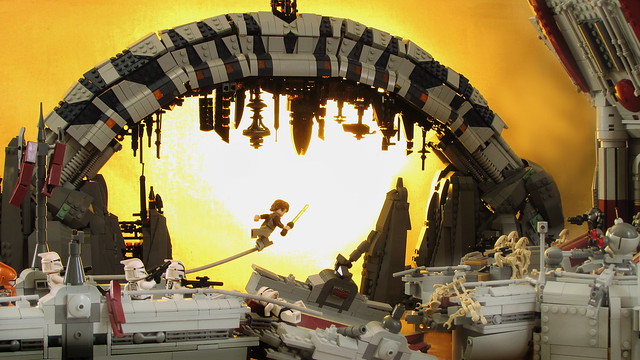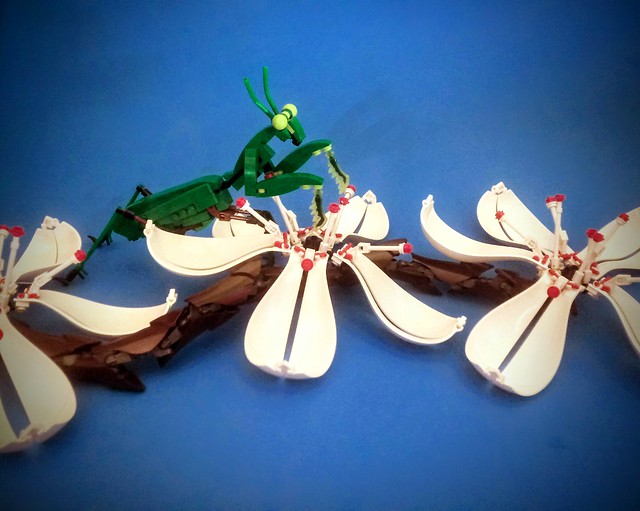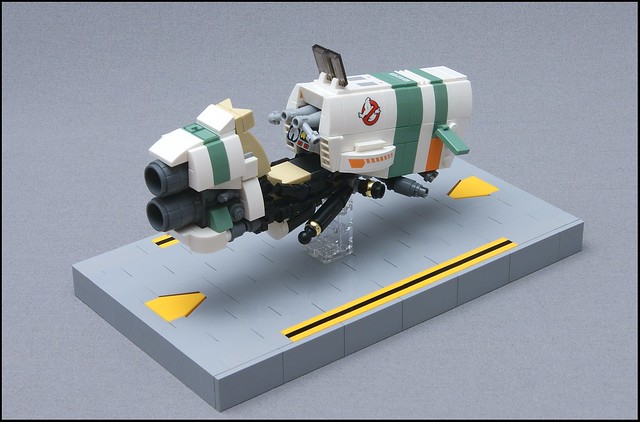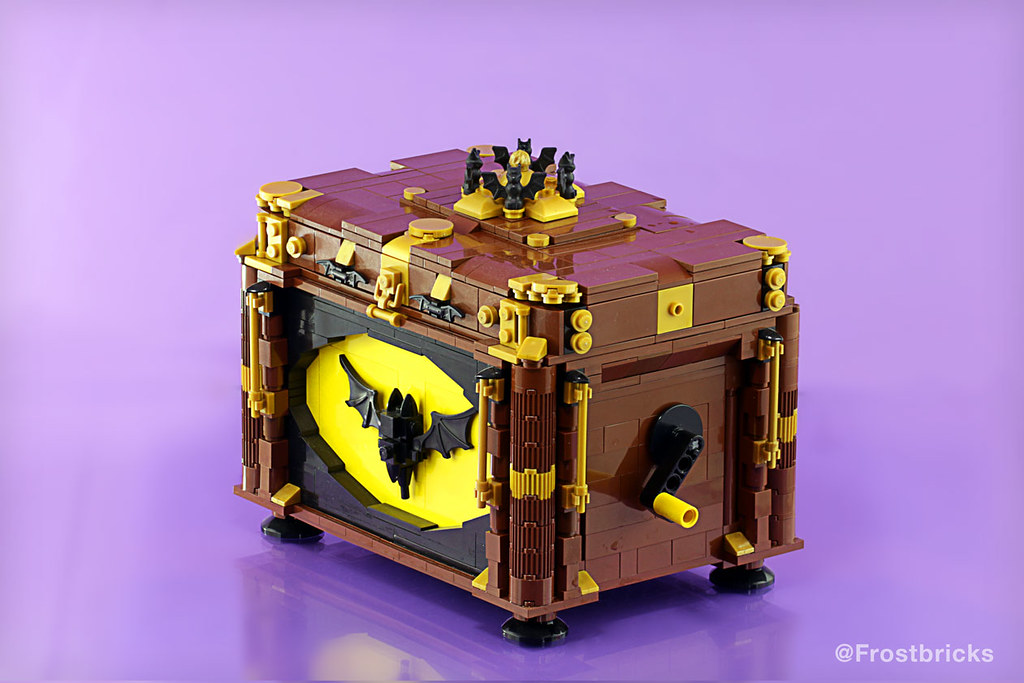TVs without remote controls meant that you had to walk to the TV to change channels. And sometimes you were the voice-activated remote controls–a direct order given by Mum or Dad to ‘change the channels’. Johan Alexanderson transports us back in time with his memories of yesteryears and the unboxing of the new family TV with a nice effect of foam peanuts spilling out. While the TV has the center of attraction, there’s also the box of distraction. What’s not to love about the giant cardboard box that came with it? The box and all those foam peanuts were also a form of entertainment. Fun fact–the cardboard box was inducted into the National Toy Hall of Fame in 2005, not long after LEGO was inducted in 1998. Long live LEGO, the TV and the cardboard box!
Category Archives: Models
More than a clock and candlestick
It’s more than an average rose, and they’re more than household items. The loveable duo of Lumiere and Cogsworth are a couple of the most beloved characters in the classic Disney universe. They’ve been recreated in LEGO many times, but this build by Stfn is not to be lost in the crowd. At this scale, the little details matter most. Using a green rifle for the rose stem and a wooden half-barrel with a weapon barrel and Technic wheel for the decorative table base are clever touches. Better yet is the dual purpose of the hinge plates in Cogsworth. Not only do they create the right body shape, but the two-tone color scheme also creates a lovely pattern that suits the character perfectly.
If you like the classic Disney movie, check out this build of Belle and Gaston. Or maybe marvel at the wonders of an award-winning replica of the castle library.
One little piece makes for an epic scene
What’s not to love in this epic battle scene by Revan New? From the clone and droid figures, the archway above, or to the sunset lighting, this creation is full of action. My favorite bit is the Jedi figure flying over the gap as he readies to cut down Separatist droids. Using the grey hose part for the jumping special effect truly helped capture the intensity of the moment.
This AT-AT’s hull is too strong for blasters
The Battle of Hoth is a popular scene to recreate with LEGO, and there are multiple versions of it as fan creations as well as official LEGO sets. My new favourite take on the battle has got to be Fuku Saku’s Assault on Hoth. He’s got all the essential elements: a snowspeeder, an AT-AT, and most importantly, a snow! On top of that, he’s built a turret representing Echo Base, a probe droid from before the battle, and an AT-ST coming up from behind.

The designs on the vehicles are spectacular, the AT-AT in particular. For one, it actually looks armoured. On top of that, all the right details are present, such as the side hatches. It even has interior detail and space for snowtroopers to actually be transported. The overall attention to detail in the entire battle scene is on point – it’s not often that blaster bolts are built into LEGO models, flying through the air. But they’re included here, and it really feels like there’s a battle going on.
R2-D2 vs the Buzz Droids
Remember that one annoying thing from the Star Wars prequel movies? No, I don’t mean that. And no, not that either. No, no, not that! I’m thinking about the Pistoeka sabotage droids also known as Buzz Droids. I mean, who would have thunk there could be these bots that can cling to a starship like a parasite and slice the important bits out of it? That is just scary stuff right there! Luckily R2-D2 was a smart little droid with a good solution to a pest control problem. He just zapped them into oblivion! Martin Latta illustrates this point nicely with some stunning photography. The blurred Venator-class Star Destroyers in the distance are an excellent touch.
Among the white petals waits a patient predator
Did you know that praying mantises are one of the fastest animals on the planet? They creep deceptively slow as they stalk their prey, but these stealthy strikers can snatch a meal twice as fast as the blink of an eye. Now, I don’t think this mantis, built by DanielBrickSon, is going to be making any sudden moves, but it sure looks good! The body-shaping is accurate, and the use of the Ninjago sword for the front legs is a perfect touch. I have to say, though, one of my most favorite parts is the use of the shin guards for the branch bark, a technique first seen on the cherry tree in Ninjago City.
Another fun fact: male mantises can continue to mate, even after the female decapitates them. She will eat him and any other would-be partners in order to give the eggs the best chance of survival. Romantic, huh? If you like LEGO animals, take a peek at some other (non-cannibalistic) creations, like a handsome boar or this colorful Bioni-frog.
A Master of Tiger Style
If you’re seeking a mastery of Tiger Style Kung Fu, look no further than this poseable Tigress figure by Block Head. The Kung Fu Panda franchise has has done remarkably well over time, spawning three movies, books, a TV series and a cast of unforgettable characters. Tigress is a stand out amongst them by being a strong female figure and leader of the series’ core group of protagonists, The Furious Five.
Block Head’s treatment of this character is top notch. The pose, which utilizes the various sizes of ball joints, portrays a wonderful sense of action and motion. However, the starring role goes to the expressive face. The claw pieces make for great angry eyebrows perched over the cartoony eye tiles and the custom sticker work blends in nicely with the overall model. Tiger Style never looked so good.
Alone, a hawk soars above it all
Usually when we see something this epic, it has already been inundated with hundreds of “likes” from adoring friends and fans. When I clicked “like” on this piece, I was number 5. That was surprising given how amazing this creation is. This castle among the rocks raises more questions than answers, like: who lives there? What are they protecting? Is it abandoned? Aside from the plant life, the hawk appears to be the only discernible living thing guarding this fortress. Amenk Sachio seems to be a builder of few words as all he had to say was #LEGOcastle.
Though there are a few statue-like guards, it is perhaps the lack of human activity and minimal explanation is what makes this so fascinating, We featured about half of this creation a year ago but it seems Amenk wasn’t finished building yet. Intricate gold filagree, bridges, buttresses, gargoyles and other details adorn the new addition as well as the old. Well, I’m intrigued, how about you?
Holy Barris Batmobile, Batman!
Back in the 1960s, Adam West delivered campy action and adventure as Batman in the live-action Batman TV series. In my opinion, the show produced the most elegant rendition of the Batmobile, and this LEGO version by Jerry Builds Bricks lives up to the beauty of the original. The 1966 Batmobile began life as the 1955 Lincoln Futura concept car, famous for its then-futuristic bubble windows and pronounced fins. Car customizing legend George Barris modified the Futura’s body for the show. Jerry’s model possesses the sleek body and fins, cleverly positioned bubble windows, and flickering flame. Dare I say it’s Bat-tastic!
Detail abounds in this Clone Wars LEGO diorama
This epic creation by Ben Cossy takes me to a galaxy far, far away. The use of white and dark gray bricks to create the landscape is incredible. I’m also impressed with the way the Republic base was incorporated into the snowy cliffside, and notice the Death Star parts used as the fuel storage tanks.
See more of this huge LEGO Star Wars diorama
Ghost speeder is scary cool
The animated series Star Wars: Rebels introduced, in my opinion, one of the most unique new ship designs since the Millenium Falcon. Hera Syndulla’s Ghost is a cargo ship packing enough firepower to take on a squadron of TIE fighters. The Ghost is also one of the more colorful ships in the Star Wars universe, with its teal, orange, and yellow highlights. This color scheme is reflected well in this speeder bike by SweStar. I love the black mechanical details along the bottom, including a few gold rings from the Lord of the Rings theme. And props for the use of official stickers from the LEGO set.
If this speeder bike looks familiar, the builder was inspired by another bike recently featured on TBB, the B9-Sokudo by Legofin.
Holy ballerina music box, Batman!
Builder Kale Frost provides Fairy Batman with the perfect habitat in this clever music box model. The release of the first wave of LEGO Batman Movie Collectible Minifigures brought us an astounding variety of Batmen: Mermaid Batman, Glam Metal Batman and even Catman, just to name a few. My personal favorite of the lot was Fairy Batman with his pink leotard, tutu and requisite magic wand. But, how to display such a character? Thanks to Frost, we finally have the answer!
This little wonder is a fully functional music box with opening lid, spinning Fairy Batman and yes, it plays music when the crank is turned! The exterior is beautifully rendered in brown and gold with Batarang accents. The larger bat on the front is particularly well done utilizing, teeth, bat wings and an ice cream cone. The box itself is gorgeous, but it’s the inside that really puts this model over the top.
See the interior of this working music box












